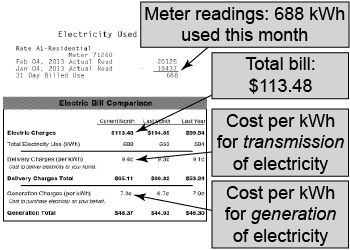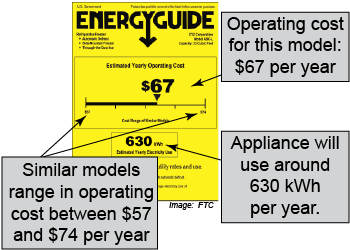|
What does physics have to do with food? The answer is far more important today than it was even 50 years ago. A healthy diet has a daily energy content of 2,000 Calories, or 8.4 million joules. This energy must come from food, and the food required to feed Earth’s human population has increased dramatically. Consider that there were about 1 billion people on Earth in 1800. By 1927 the population had doubled to 2 billion. By 1960 there were 3 billion people. By 1974 there were 4 billion, and by 2012 the world population was 7 billion and growing. Yet the amount of land and sunlight available for farming is the same today as it was 200 years ago. 
|
Since 1950 the world population has almost tripled. Yet, according to the U.S. Geological Survey, the amount of land and water devoted to growing food has actually decreased because of urbanization and soil degradation. How do we feed more people with less farmland? The answer is a widespread change from traditional methods of farming to more energy-intensive, high-yield agriculture. This largely took place between 1950 and 2000, a period that has been dubbed the “green revolution.” 
 |
 Farming became highly mechanized with tractors, cultivators, and other specialized machines. Irrigation use was drastically increased. Soil enhancement through the use of nitrates and other fertilizers became standard practice, as did pest control though herbicides and insecticides. As a result, by 2000 one average acre of farmland produced more than six times as much food as the same acre in 1900. In short, farming became a high-technology enterprise.
Farming became highly mechanized with tractors, cultivators, and other specialized machines. Irrigation use was drastically increased. Soil enhancement through the use of nitrates and other fertilizers became standard practice, as did pest control though herbicides and insecticides. As a result, by 2000 one average acre of farmland produced more than six times as much food as the same acre in 1900. In short, farming became a high-technology enterprise. 
 |
Agricultural technology requires vastly more energy compared to traditional farming using only sunlight and muscle power. Energy is required to manufacture and fuel farm machines. Energy is required to make synthetic fertilizers and herbicides. Energy is required to pump water hundreds of miles for irrigation. Energy is required to move food from distant farms to your dinner table fast enough to avoid spoilage. 
 |
Most experts agree that the human population of Earth will continue to increase, reaching 9.3 billion by 2050 according to a United Nations study. Because population growth is concentrated in cities, and urbanization displaces farms, scientists agree that food productivity must roughly double to meet future needs. Furthermore, some short-sighted and unsustainable practices that arose during the 1950s cannot continue lest they actually cause harm by leading to soil degradation. 
|
 Your family’s monthly home electricity bill shows how much electrical energy you used in the past month (measured in kilowatt-hours or kWh) and charges for the generation and transmission of that electricity. Electricity generation costs are for the power plant—hydroelectric, coal-fired, natural gas, etc.—that produced the power in the first place. Electricity transmission costs cover the high-voltage power lines, the power lines on your street, the transformers, and so on. In the example at right, the delivery costs (9.4 cents/kWh) are actually higher than the generation costs (7.0 cents/kWh)!
Your family’s monthly home electricity bill shows how much electrical energy you used in the past month (measured in kilowatt-hours or kWh) and charges for the generation and transmission of that electricity. Electricity generation costs are for the power plant—hydroelectric, coal-fired, natural gas, etc.—that produced the power in the first place. Electricity transmission costs cover the high-voltage power lines, the power lines on your street, the transformers, and so on. In the example at right, the delivery costs (9.4 cents/kWh) are actually higher than the generation costs (7.0 cents/kWh)! 
|
Have class volunteers bring in a copy of their most recent electricity bills. Each student can extract and communicate the information in his or her bill, such as energy used per month, cost per kilowatt-hour, and change in consumption compared to the previous month. 
|
 Major home appliances are sold with an “EnergyGuide” label that indicates their expected energy consumption per year. This standardized labeling compares the energy usage of a particular appliance with similar models produced by the same or other companies. In the example at right, this refrigerator will cost approximately $67 to operate per year and consumes somewhat more energy than the average of other models.
Major home appliances are sold with an “EnergyGuide” label that indicates their expected energy consumption per year. This standardized labeling compares the energy usage of a particular appliance with similar models produced by the same or other companies. In the example at right, this refrigerator will cost approximately $67 to operate per year and consumes somewhat more energy than the average of other models. 
 |
 The EnergyGuide label is required for major appliances. In contrast, Energy Star is a voluntary program that highlights products that are particularly energy efficient. A product can only display the Energy Star logo if it meets particular requirements, such as being significantly more energy efficient than federal standards for that product. A refrigerator must be 20% more efficient than the standard to display the logo, whereas a dishwasher must be 41% more efficient.
The EnergyGuide label is required for major appliances. In contrast, Energy Star is a voluntary program that highlights products that are particularly energy efficient. A product can only display the Energy Star logo if it meets particular requirements, such as being significantly more energy efficient than federal standards for that product. A refrigerator must be 20% more efficient than the standard to display the logo, whereas a dishwasher must be 41% more efficient. 
|
Research clothes dryers either on the Internet or in a local store to compare the energy consumption of each appliance. In class, each student should verbally summarize the content of a label, such as its annual energy consumption, yearly operating cost, and how it compares to similar models. Which models are the most energy efficient? 
 |
Look carefully at each label: Are the comparison appliance models the same for each clothes dryer, or do they fall into different categories? Do all the labels assume the same cost of electricity (in cents per kilowatt-hour)? 
|
In the EnergyGuide illustration above, what is the cost of electricity assumed in producing this label?
 |
The refrigerator uses around 630 kWh per year and the cost per year is $67. The assumed cost of electricity is therefore ($67/year) / (630 kWh/year) = 10.6 cents/year. 
|
Which of the following are reasons why total agricultural production has increased over the past 100 years? - more mechanized farm equipment
- better irrigation techniques
- better methods to deal with insects
- all of the above
 |
The answer is d, all of the above. All of the answers are reasons why agricultural production has increased. 
|

